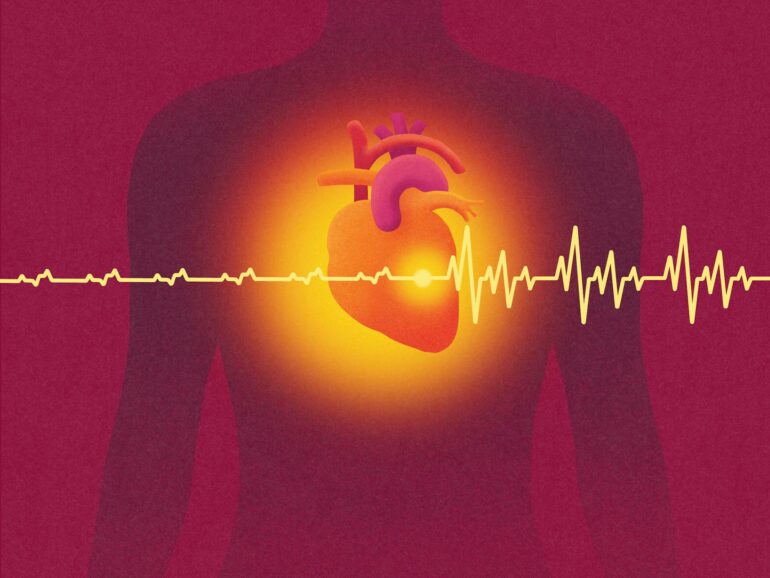By harnessing light, my colleagues and I designed a wireless, ultrathin pacemaker that operates like a solar panel. This design not only eliminates the need for batteries but also minimizes disruptions to the heart’s natural function by molding to its contours. Our research, recently published in the journal Nature, offers a new approach to treatments that require electrical stimulation, such as heart pacing.
Pacemakers are medical devices implanted in the body to regulate heart rhythms. They’re composed of electronic circuits with batteries and leads anchored to the heart muscle to stimulate it. However, leads can fail and damage tissue. The location of the leads can’t be changed once they’re implanted, limiting access to different heart regions. Because pacemakers use rigid, metallic electrodes, they may also damage tissue when restarting the heart after surgery or regulating arrhythmia.
Our team envisioned a leadless and more flexible pacemaker that could precisely stimulate multiple areas of the heart. So we designed a device that transforms light into bioelectricity, or heart cell-generated electrical signals. Thinner than a human hair, our pacemaker is made of an optic fiber and silicon membrane that the Tian lab and colleagues at the University of Chicago Pritzker School of Molecular Engineering have spent years developing.
Like solar panels, this pacemaker is powered by light.
Unlike conventional solar cells that are usually designed to collect as much energy as possible, we tweaked our device to generate electricity only at points where light strikes so it can precisely regulate heartbeats. We did this by using a layer of very small pores that can trap light and electrical current. Only cardiac muscles exposed to light-activated pores are stimulated.
Because our device is so small and light, it can be implanted without opening the chest. We were able to successfully implant it in the hearts of rodents and an adult pig, pacing the beats of different heart muscles. Because pig hearts are anatomically similar to human hearts, this accomplishment shows our device’s potential to translate to people.
Why it matters
Heart disease is the leading cause of death around the world. Annually, over 2 million people undergo open-heart surgery to treat heart problems, including to implant devices that regulate heart rhythms and prevent heart attacks.
Our ultralight device gently conforms to the surface of the heart, enabling less invasive stimulation and improved pacing and synchronized contraction. To reduce postoperative trauma and recovery time, our device can be implanted with a minimally invasive technique.
What still isn’t known
Currently, our technology is best first used for urgent heart conditions, including restarting the heart after surgery, heart attack and ventricular defibrillation. We continue to explore its long-term effects and…



